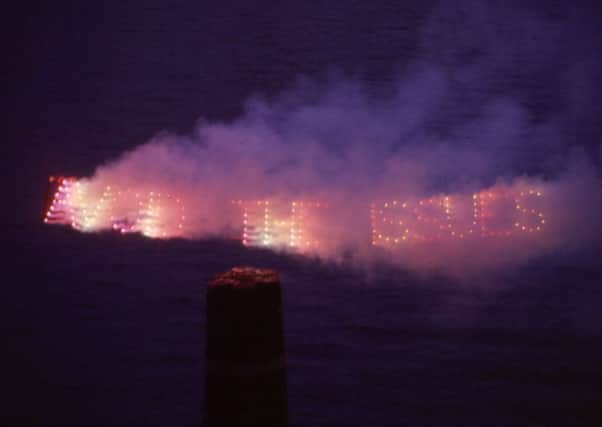Creative spark lights blue touchpaper on new show


WHEN she arrived at the Henry Moore Institute, Lisa Le Feuvre didn’t exactly promise fireworks. She did promise that she would strive to make the sometimes seemingly monolithic institution more welcoming.
A couple of years in, the job’s not finished, but she can consider it job done. And next Wednesday she does promise fireworks to help her continue down the path of making the Leeds city centre gallery an open and welcoming place for all visitors.
Advertisement
Hide AdAdvertisement
Hide Ad“I have this idea that people will be going home from work and see the fireworks on the building. And maybe they will notice us and think that they might come inside sometime and see what we are doing,” she says.
If they do – and chances are at least some will – what they will see ‘they’ are doing inside the Henry Moore Institute is turning the place into one of Yorkshire’s leading galleries – exciting, contemporary, but most of all, relevant.
“People think they don’t understand art and particularly sculpture. Art is trying to explain what it is to be human – and we are all experts at that,” says Le Feuvre.
She has been leading a charge since she arrived in Leeds to bring the artform in which the Henry Moore Institute specialises to the masses. The latest step is in bringing a new exhibition, showing the work of three artists, to the gallery.
Advertisement
Hide AdAdvertisement
Hide AdAmerican artist Dennis Oppenheim, Swiss Jean Tinguely and British artist Stephen Cripps are all going to be shown alongside each other in the latest exhibition.
Le Feuvre sounds excited – she always sounds excited – but she appears to be particularly pleased because the exhibition does exactly what she wants the institute to do, and has wanted it to do since she arrived.
“The exhibitions are a celebration of the way sculpture is no longer, and hasn’t been since the 1960s, simply about a solid object that doesn’t move,” she says.
“Tinguely began experimenting in the 1950s with mechanical sculptures that would move and spin and have a life. When Oppenheim began making his work, Tinguely said he was the inheritor of his work.
Advertisement
Hide AdAdvertisement
Hide Ad“Oppenheim went further and used fireworks and flames in creating his pieces. He used machines in his work as well, to bring his sculptures to life – we’ve got two of them in the gallery and one of them makes candy floss.”
Yes, the Henry Moore Institute, that austere building standing solid on the Headrow in Leeds city centre, is home to an exhibition that includes a candy-floss making machine.
“It has always been really important to me that we are not this austere organisation, that people don’t think that we are not somewhere for them to come,” says Le Feuvre.
“I hope people will see that our exhibitions can be about sculptures that incorporate fireworks and will be inspired to come and see us and see what we have inside the galleries too.”
Work of three artists with a gift for pyrotechnics
Advertisement
Hide AdAdvertisement
Hide AdDennis Oppenheim: Thought Collision Factories is at the Henry Moore Institute until February 16.
The launch of the exhibition is taking place on Wednesday next week, with Oppenheim’s sculpture, incorporating fireworks, being lit and burning for a minute, at 5.30pm.
Jean Tinguely’s Spiral is on display as part of the exhibition, until January 5.
Stephen Cripps: Pyrotechnic Sculptor, will exhibit the work of this British artist for the first time since his death in 1982. On display to February 16.
Full details www.henry-moore.org